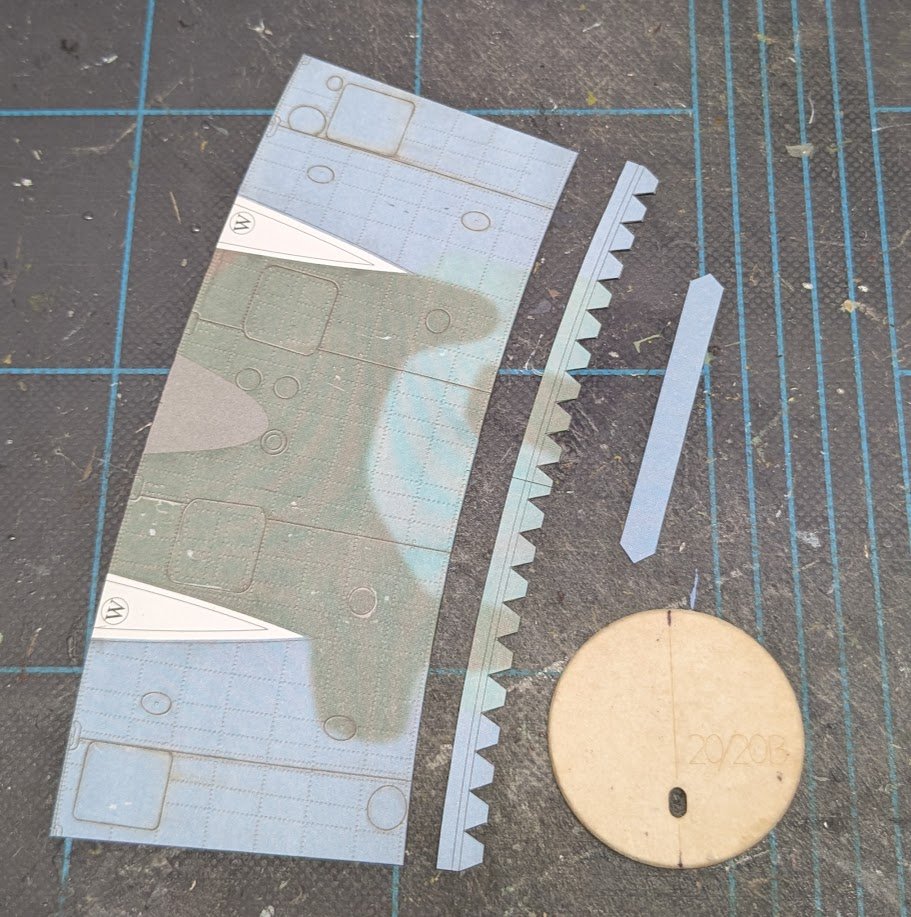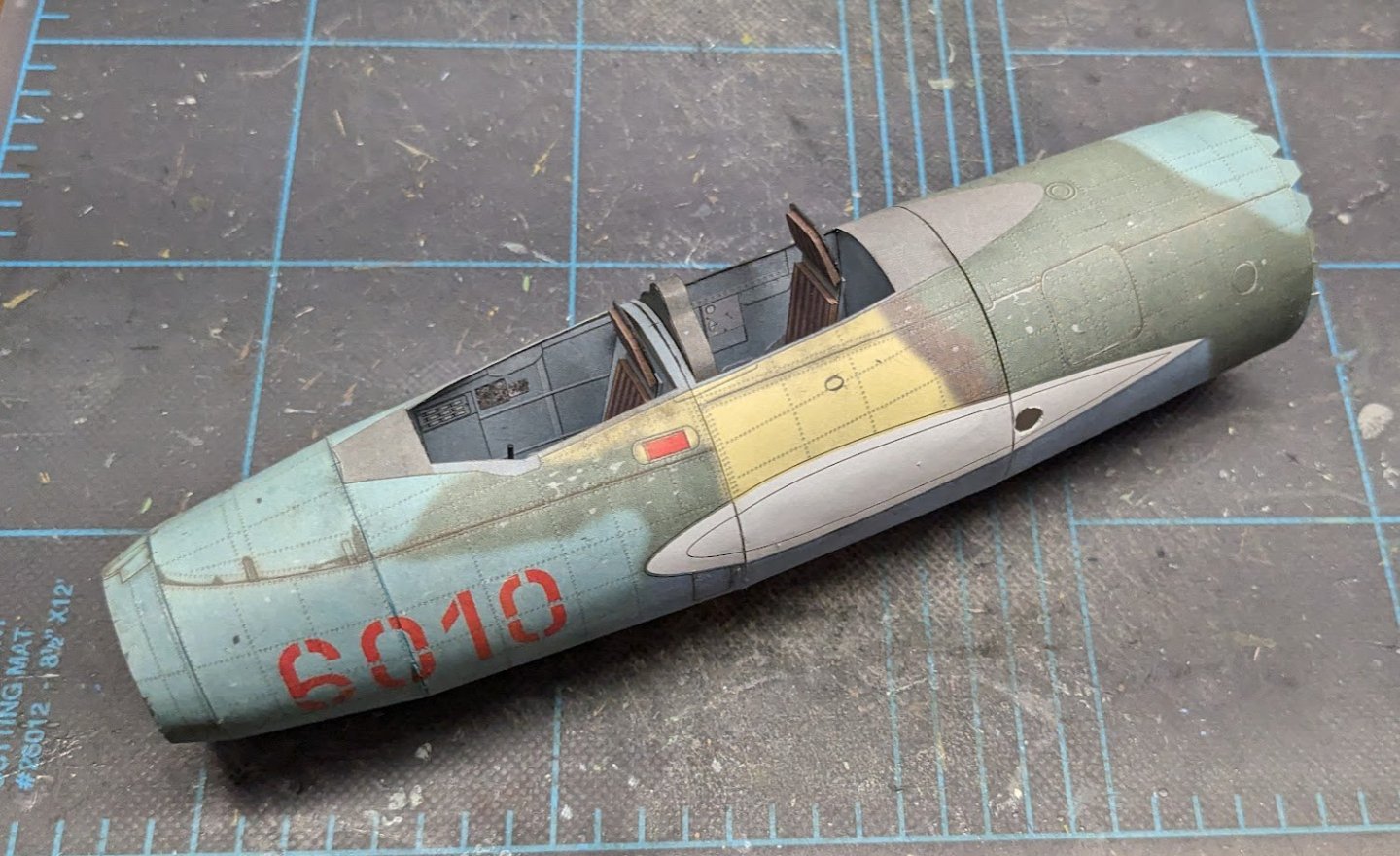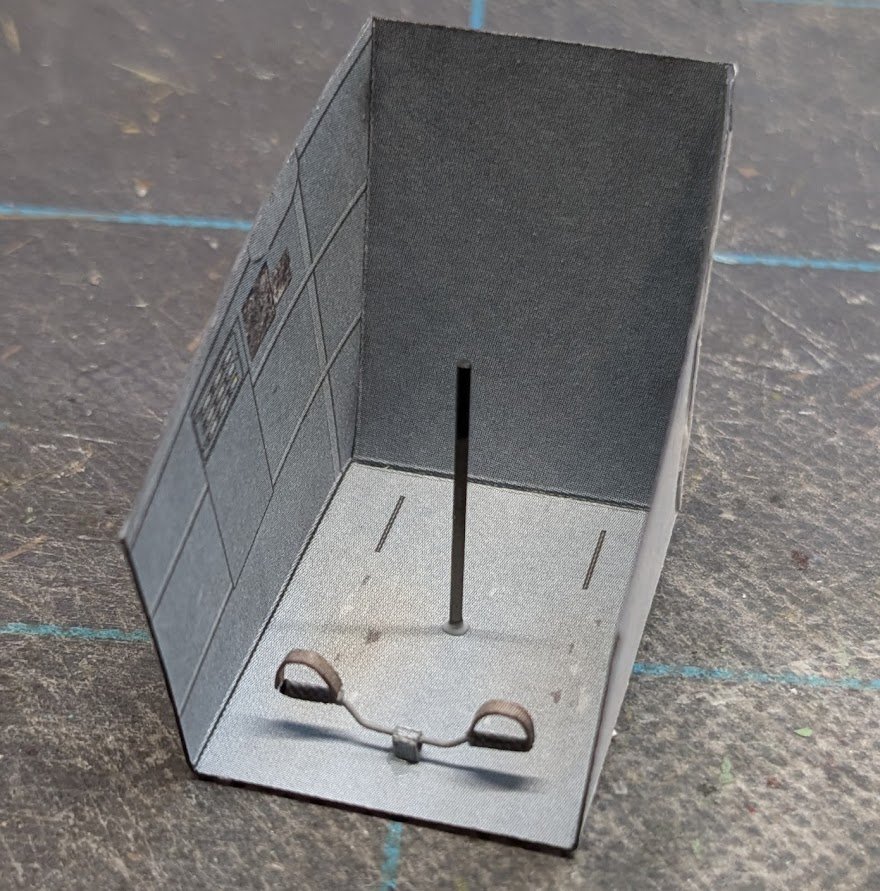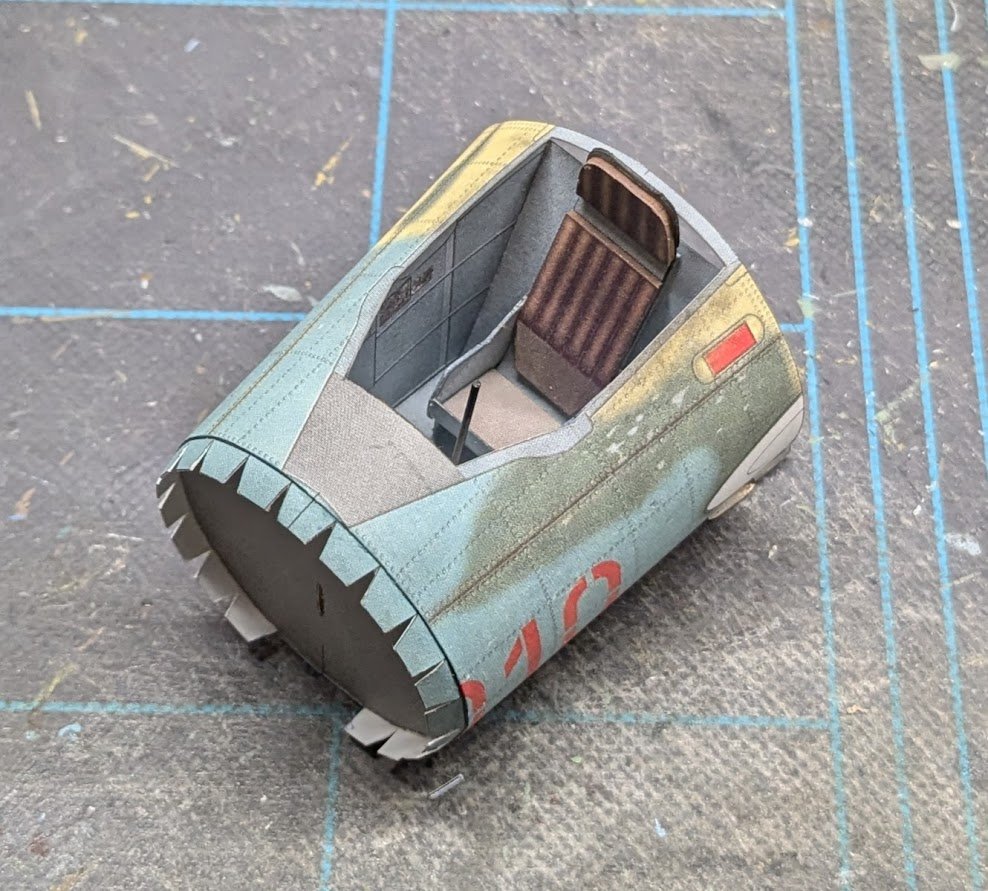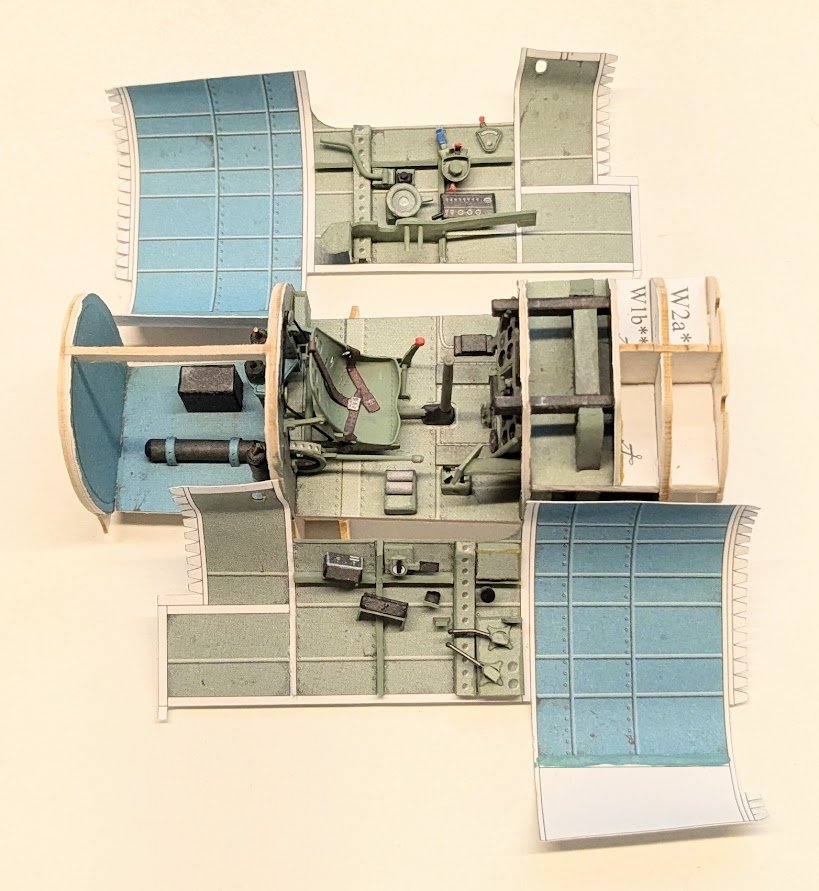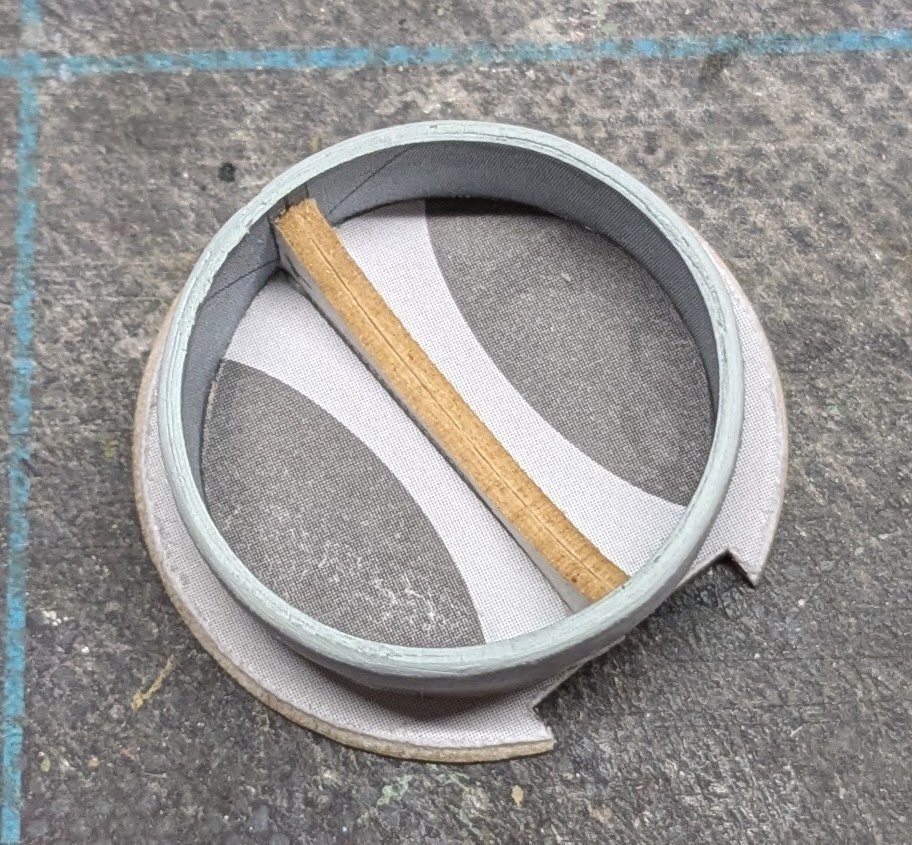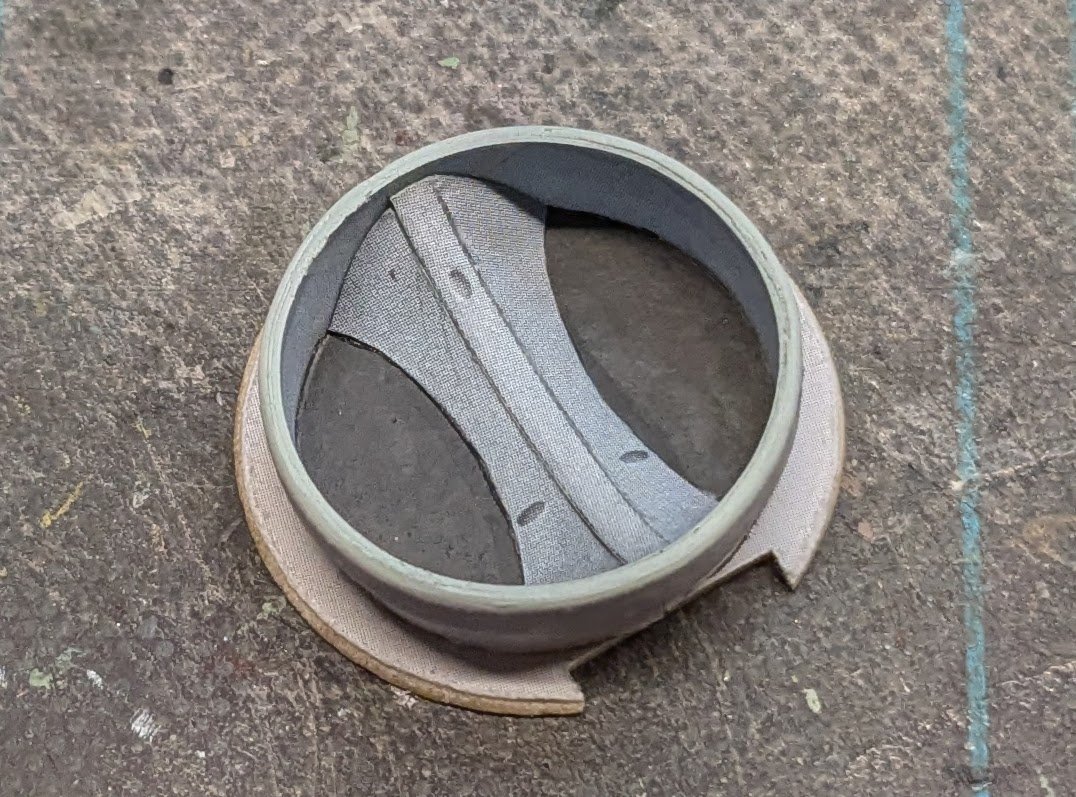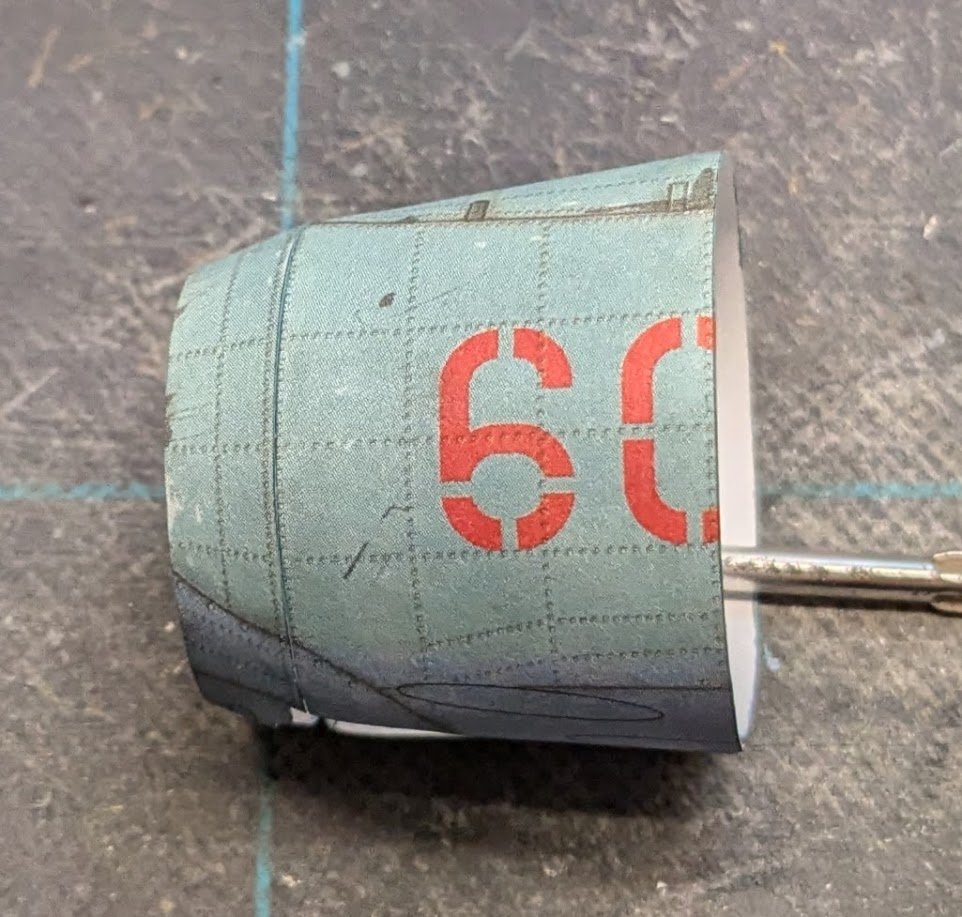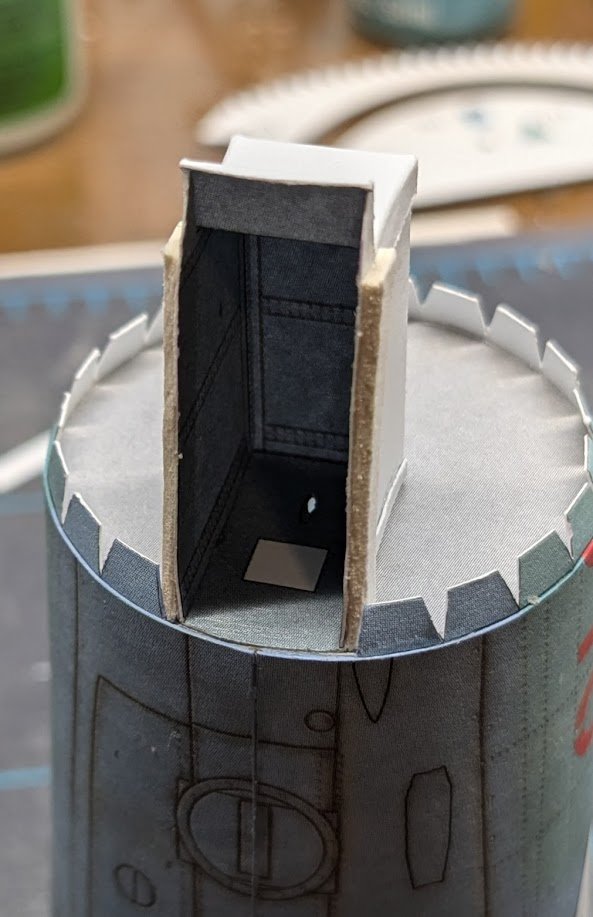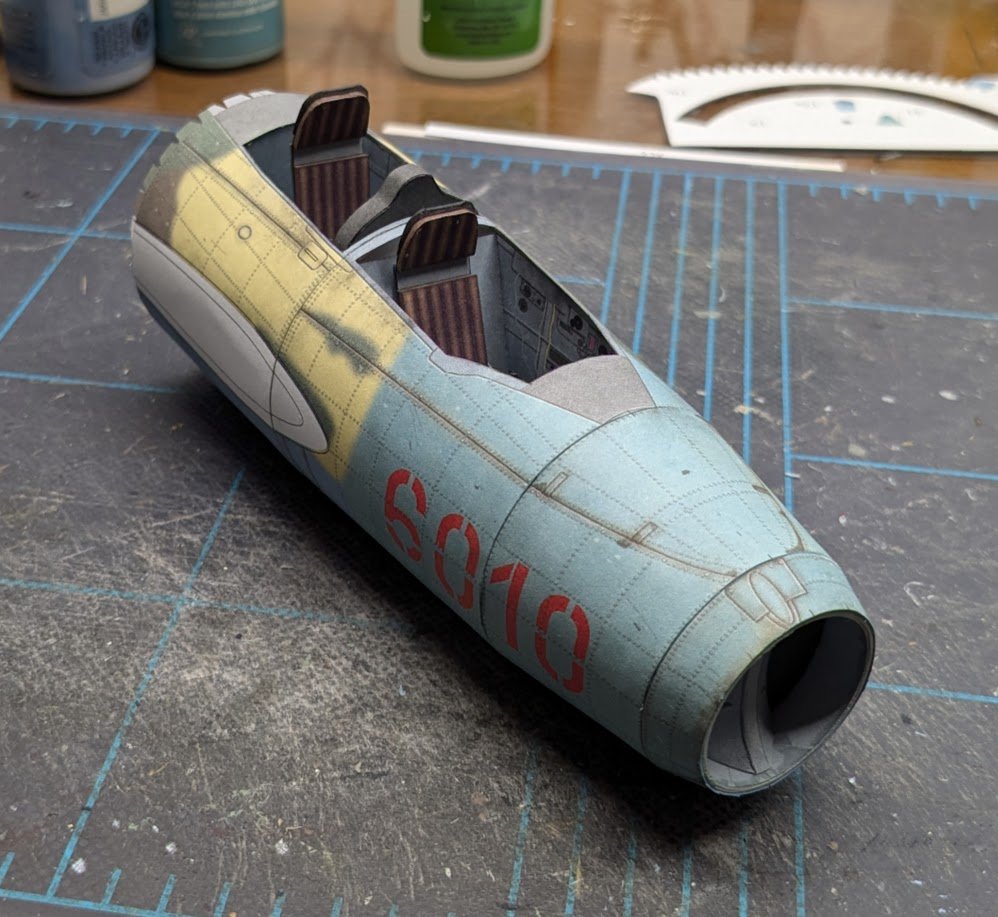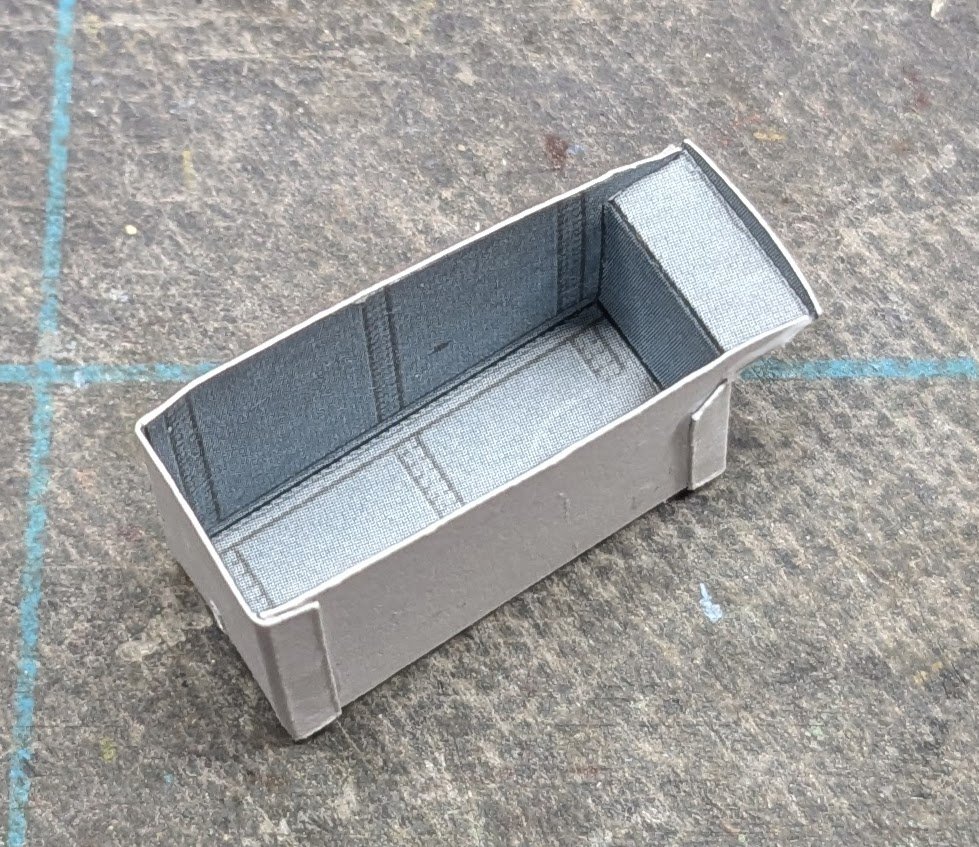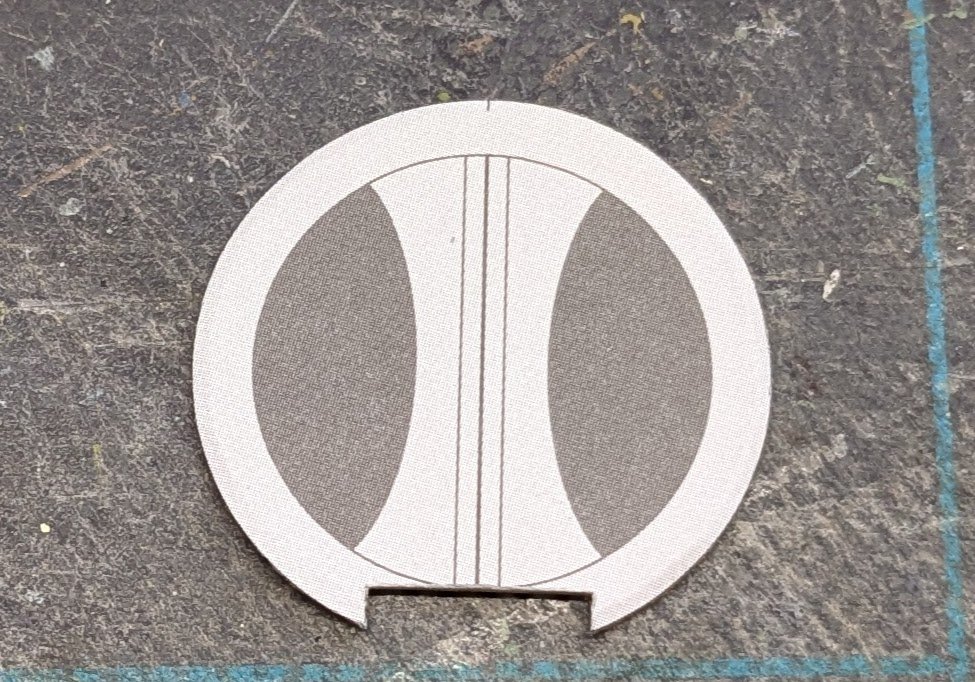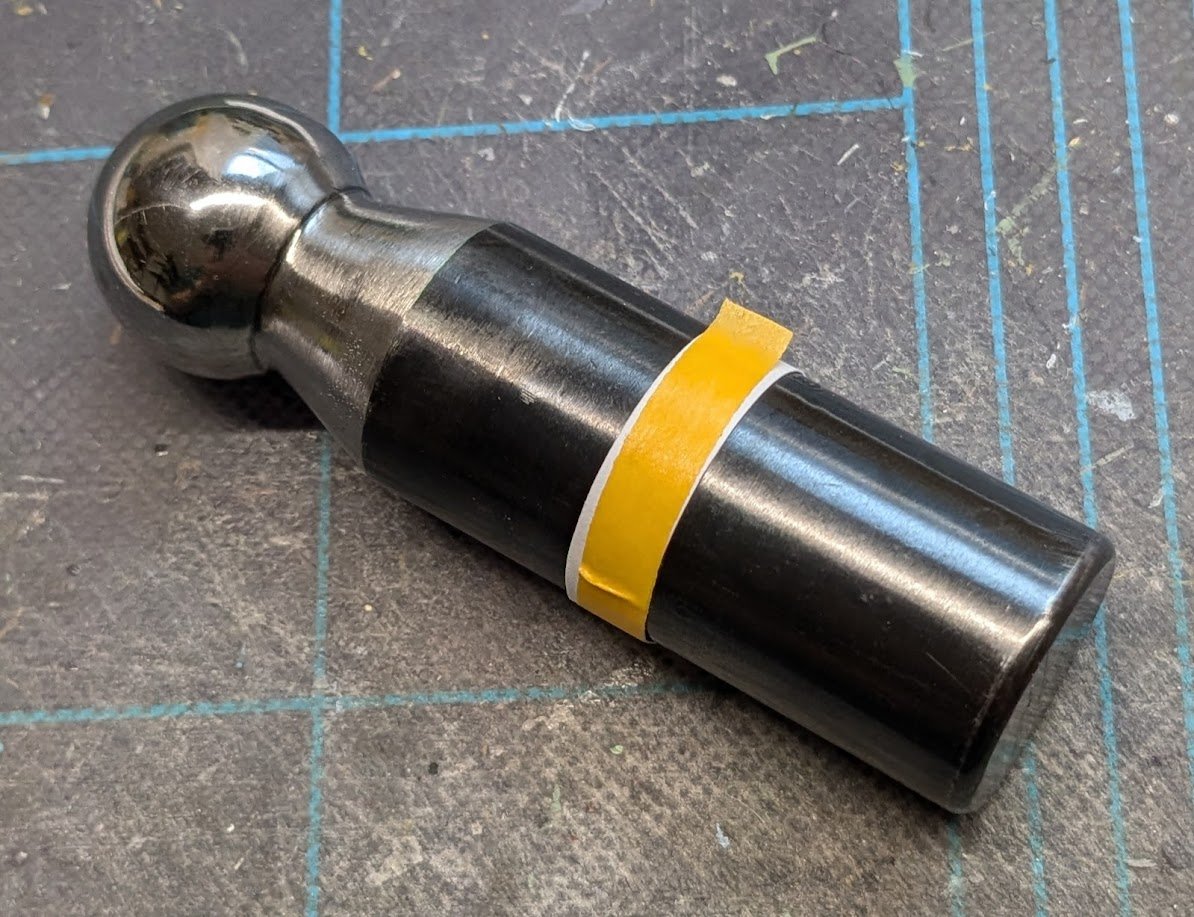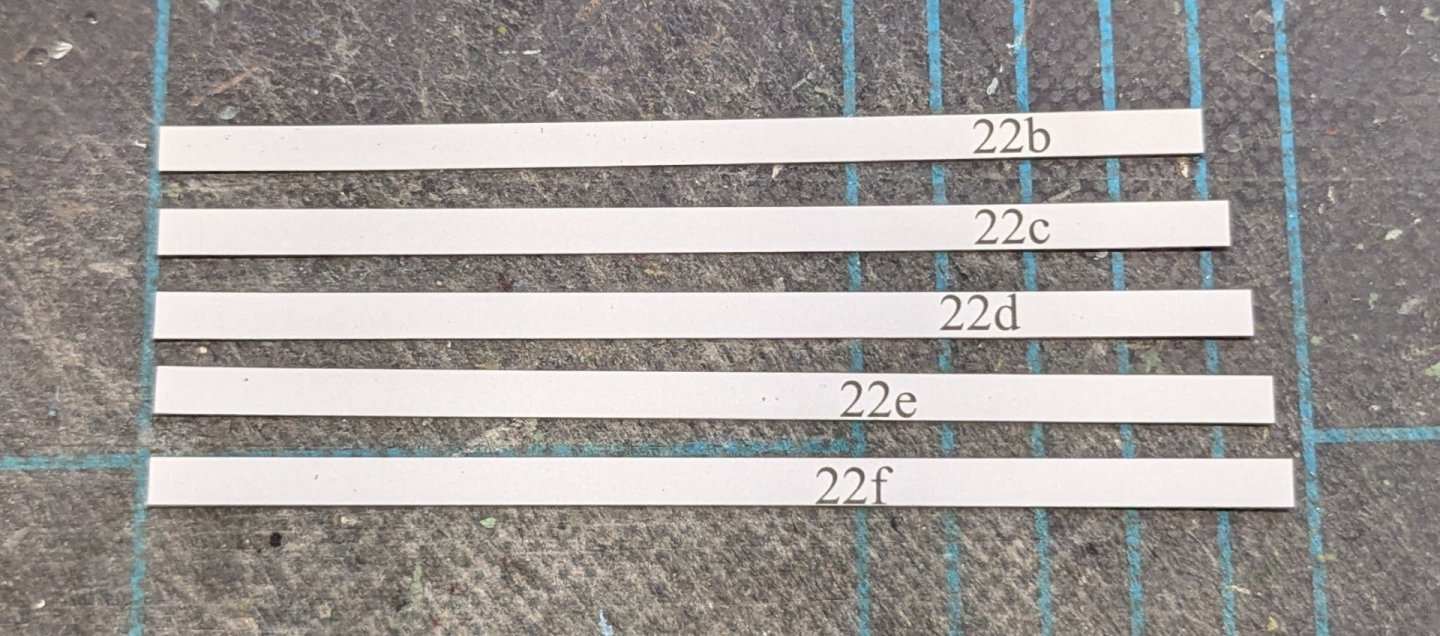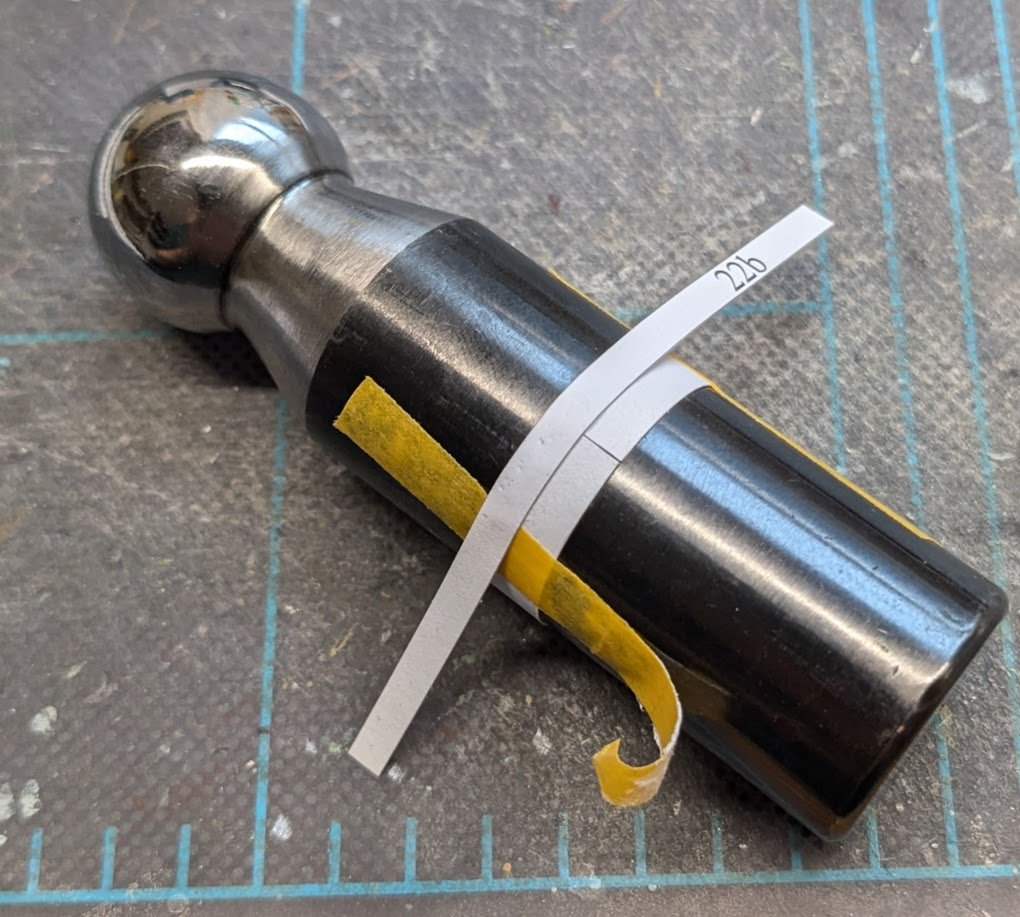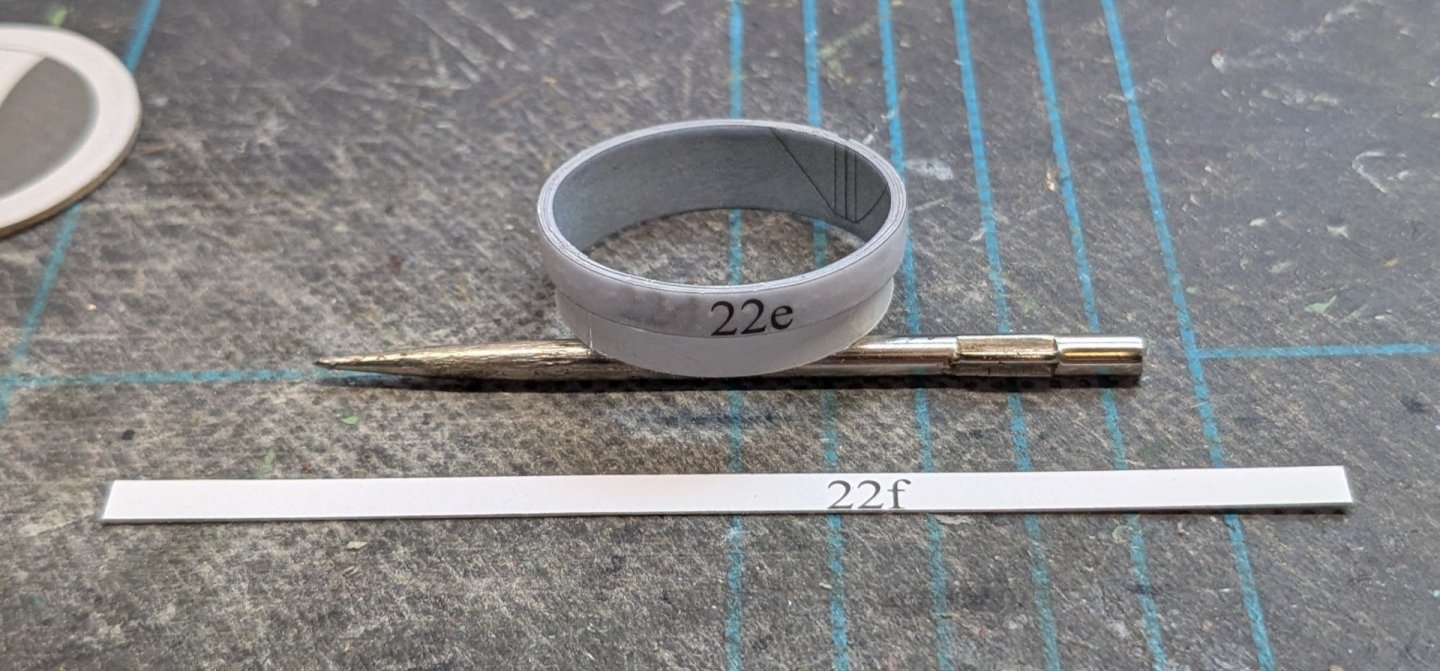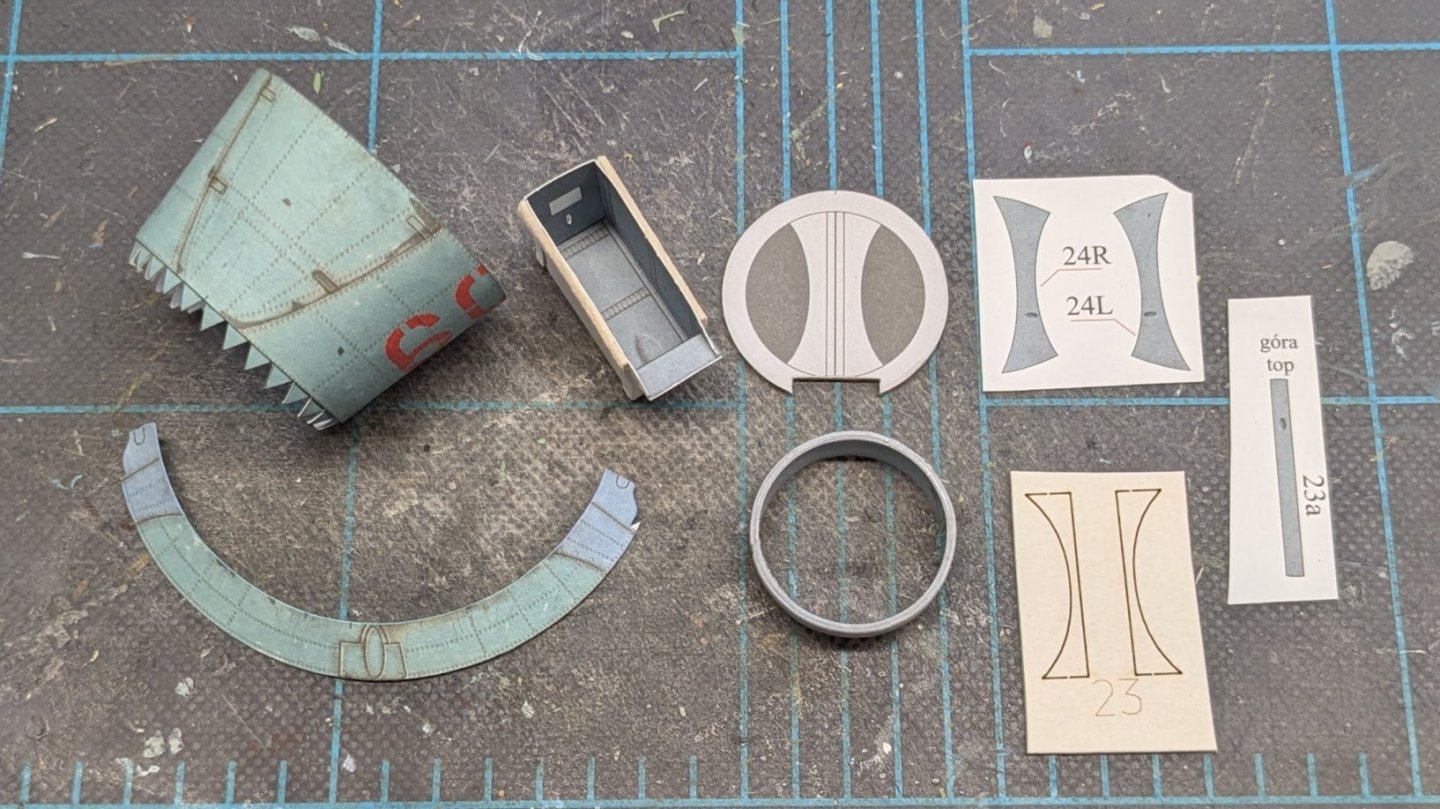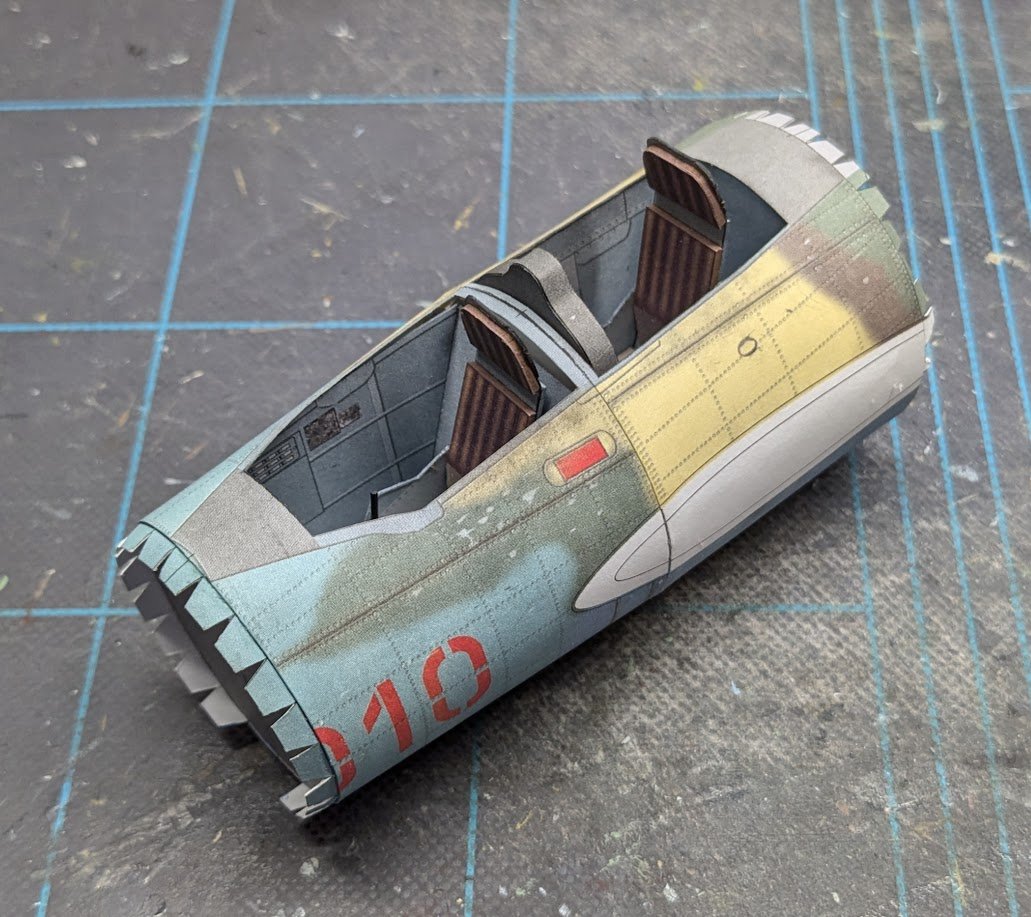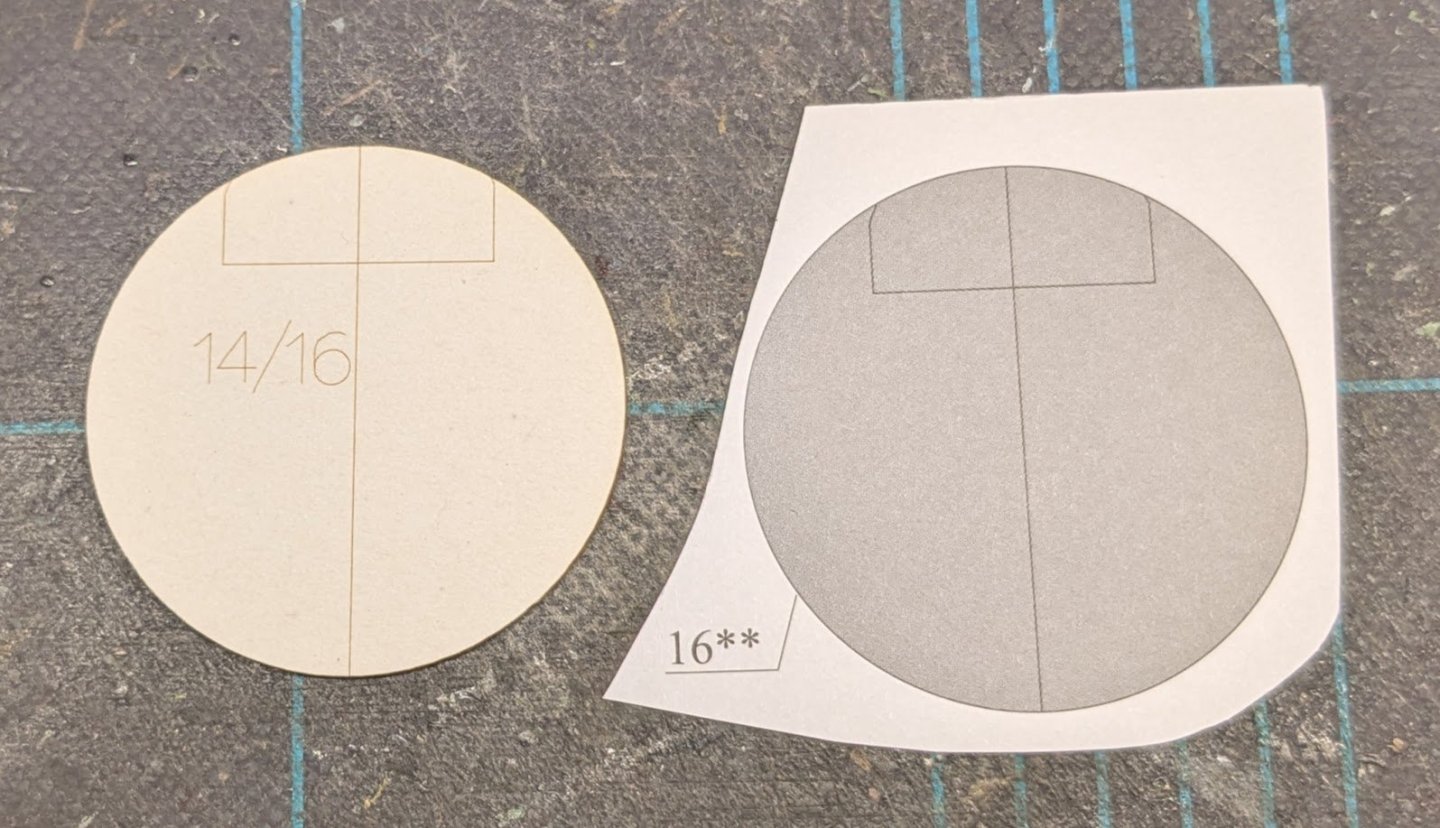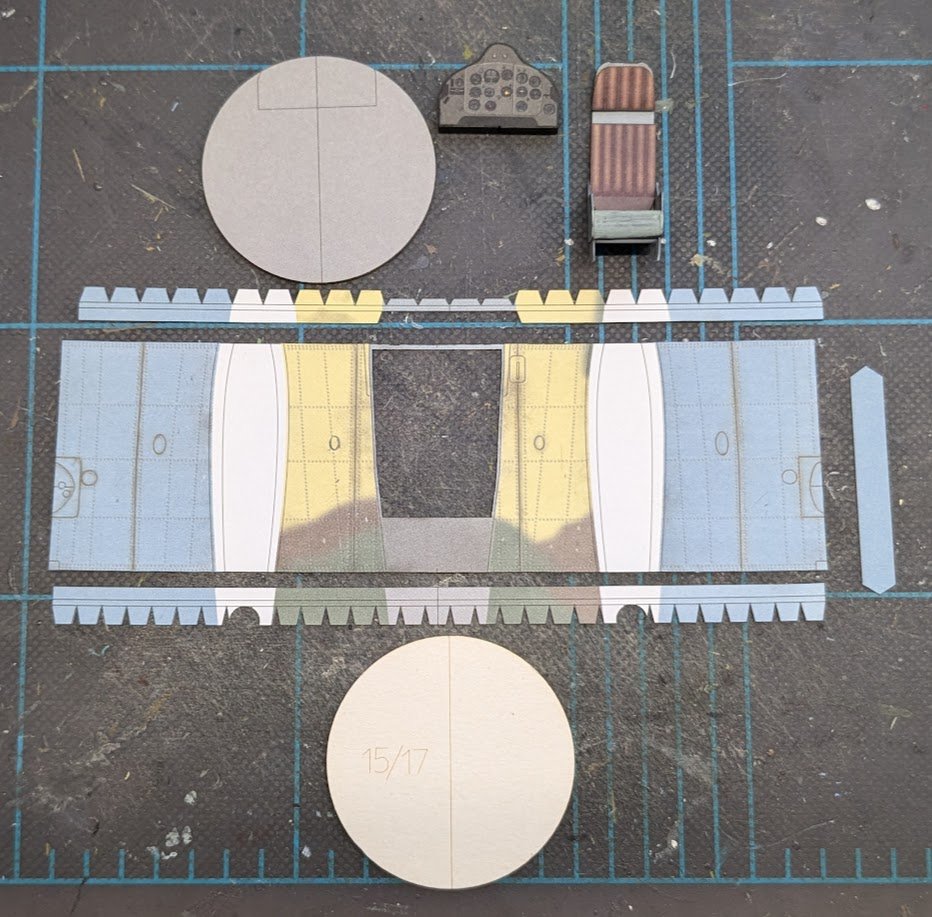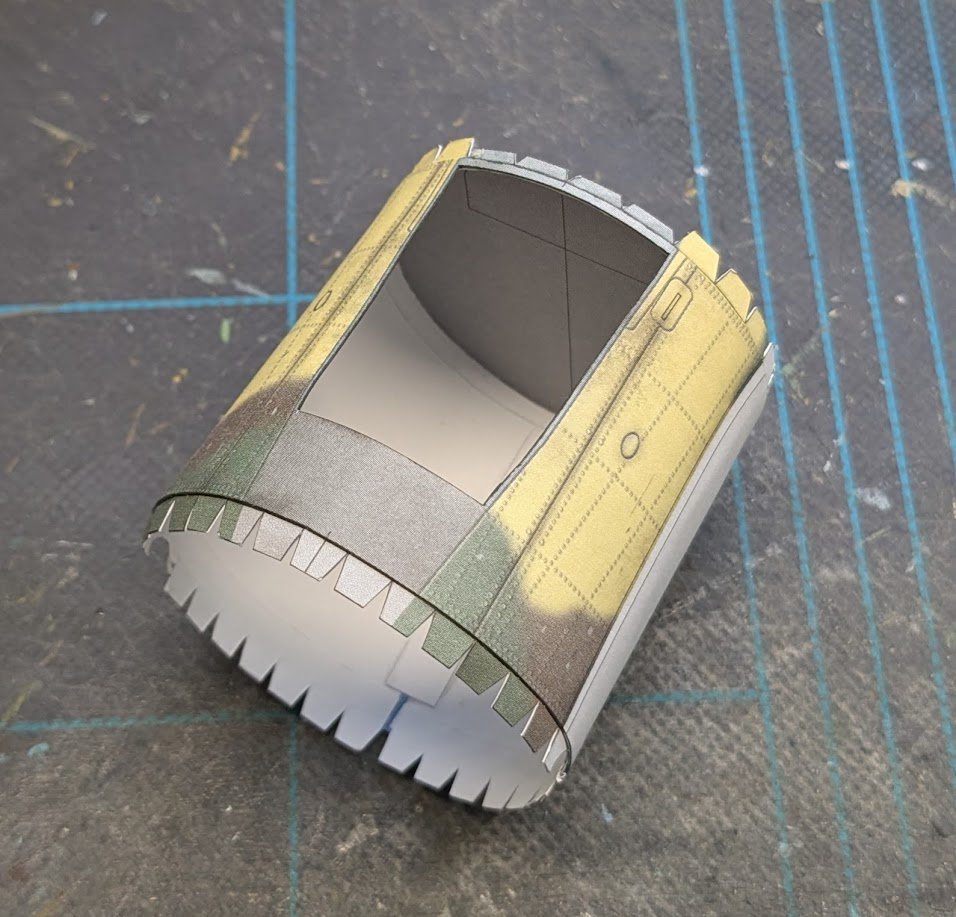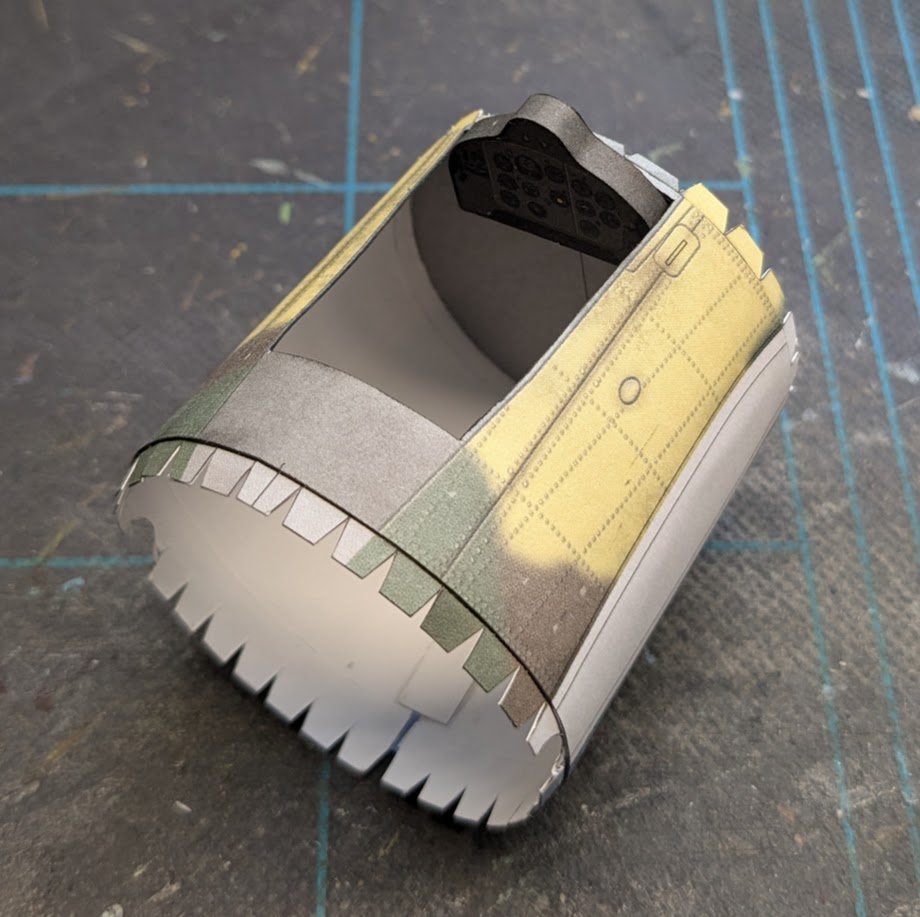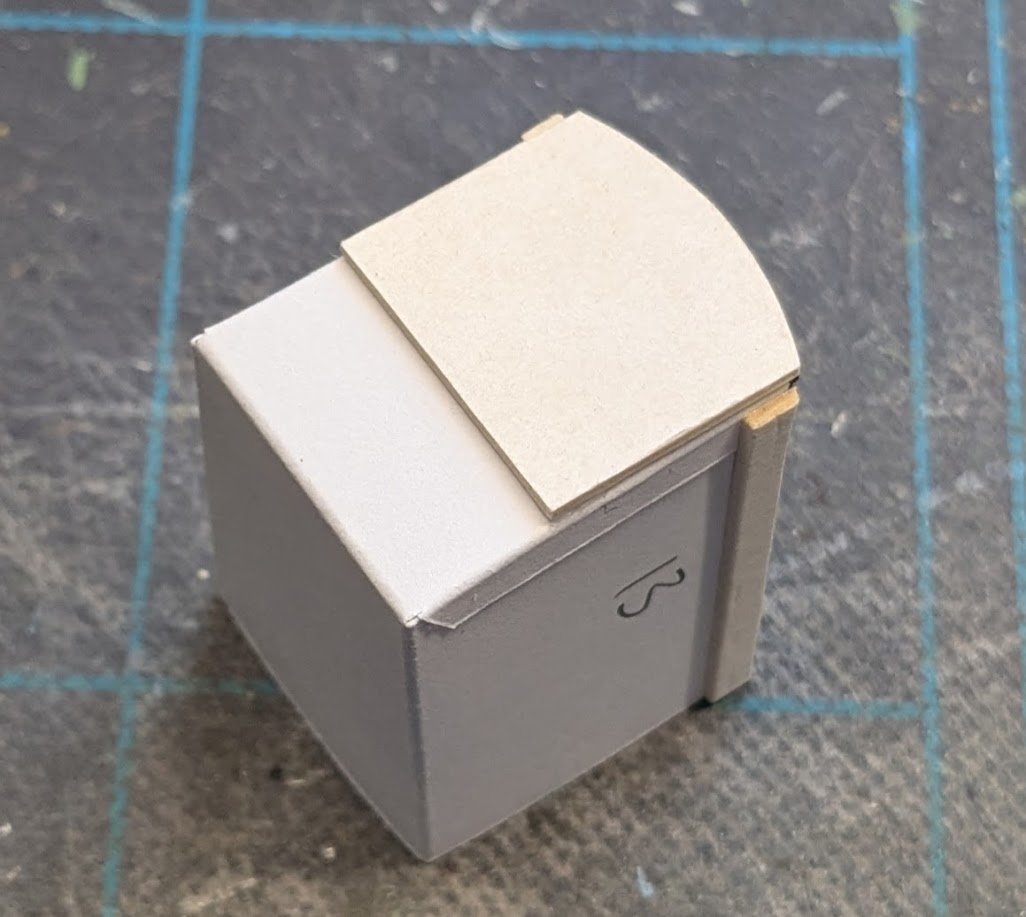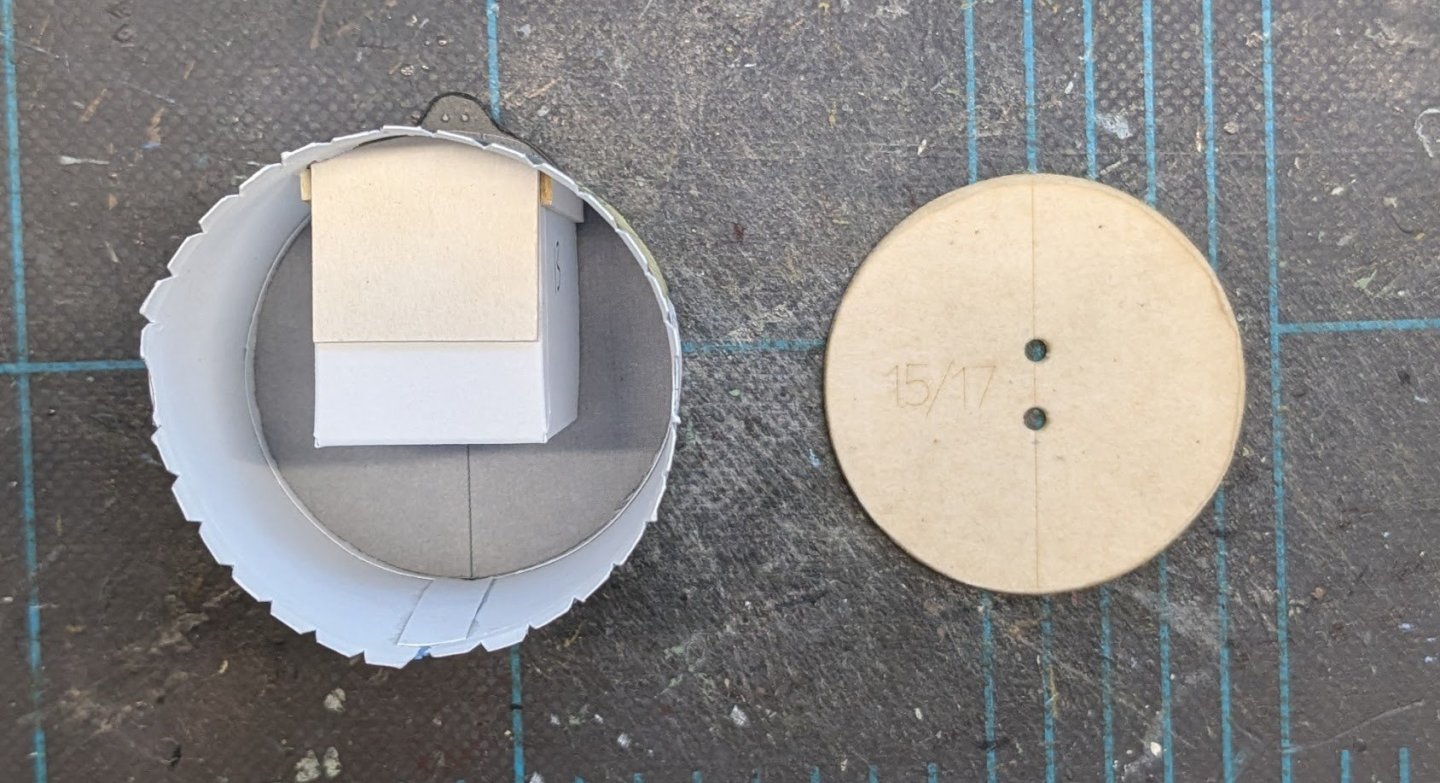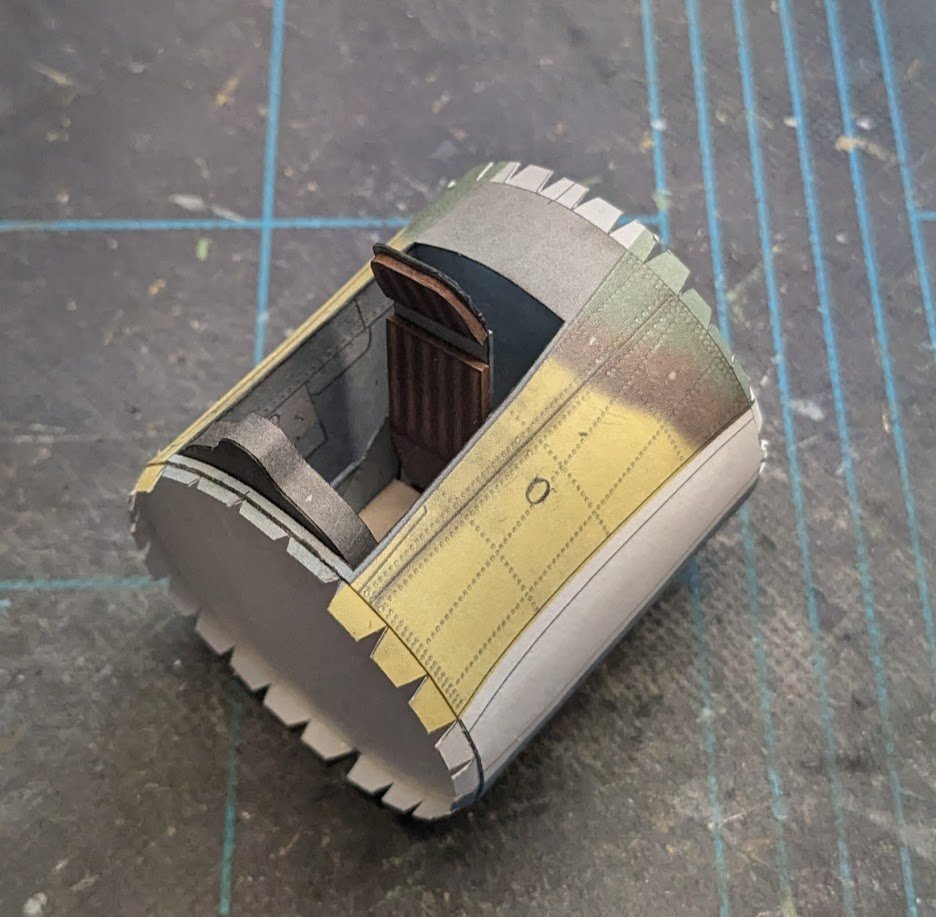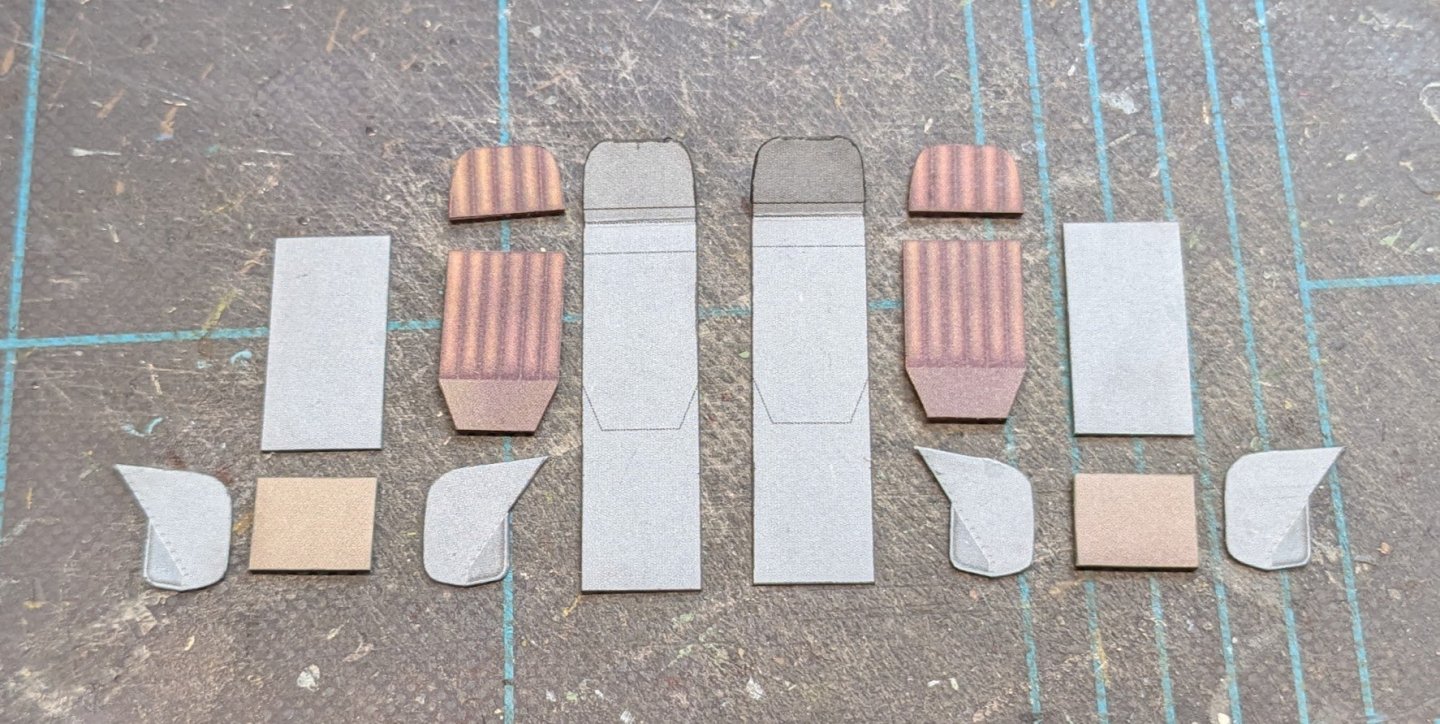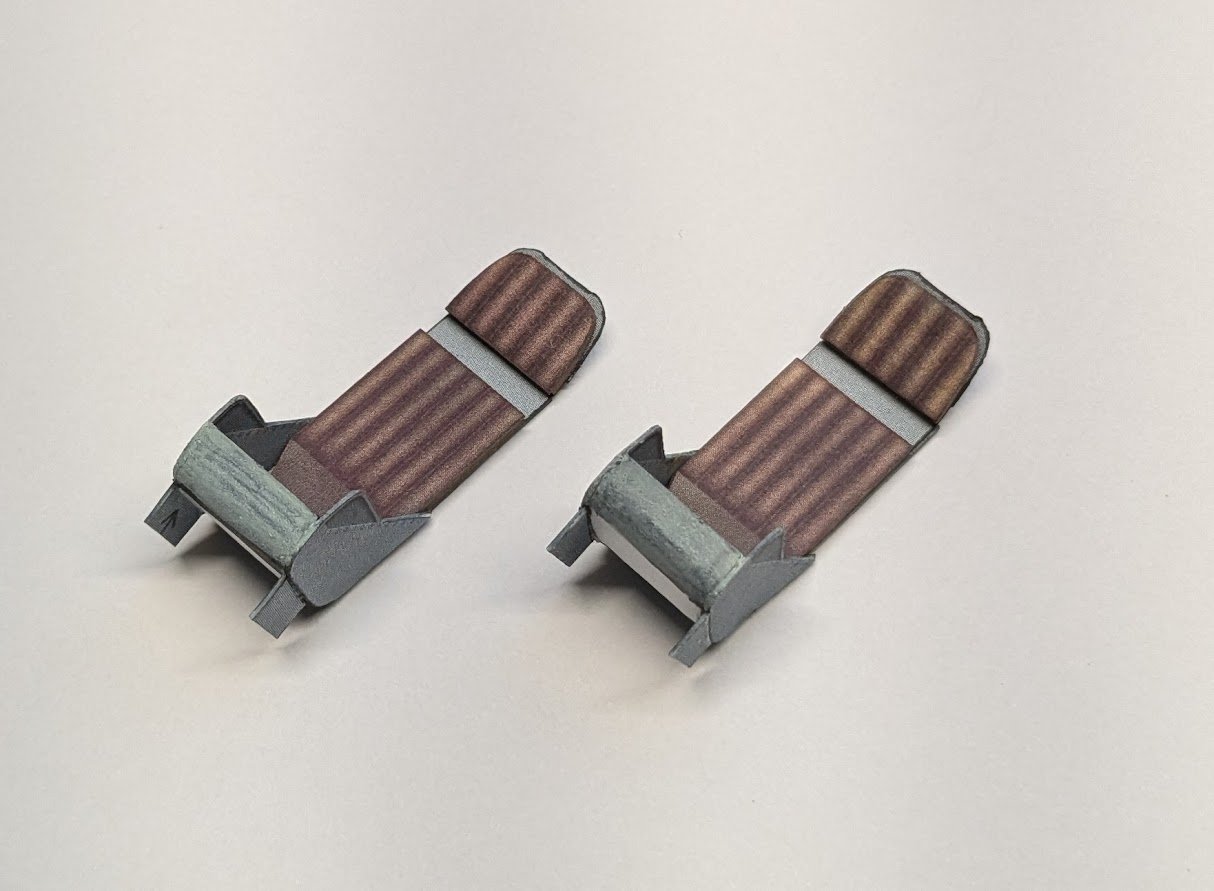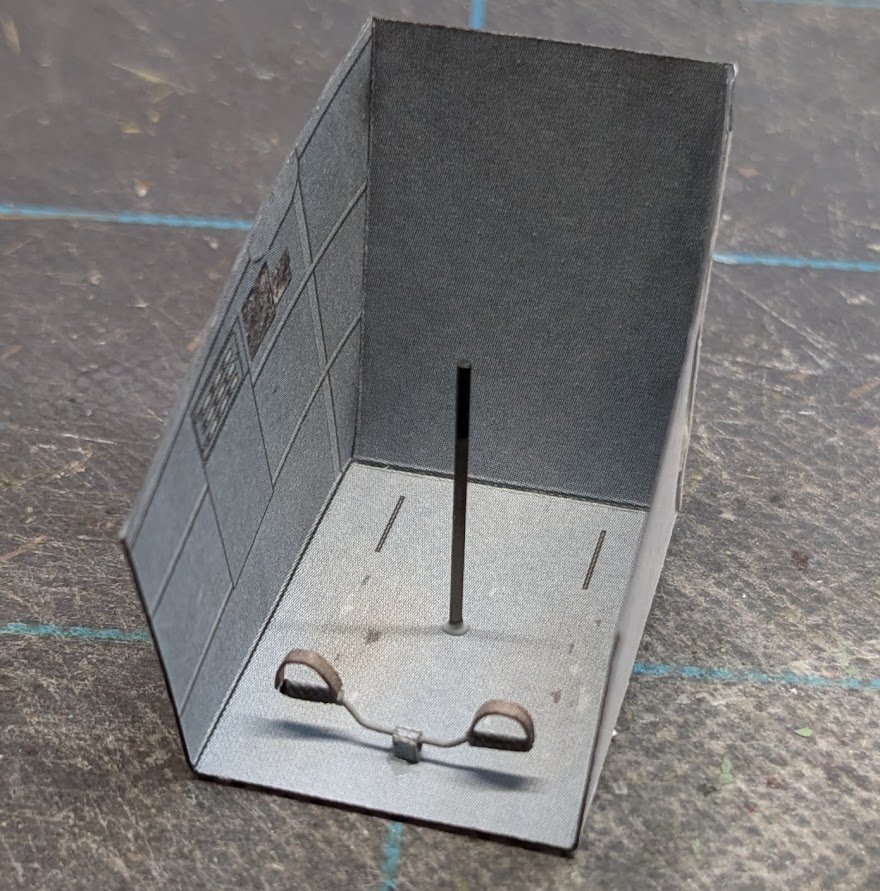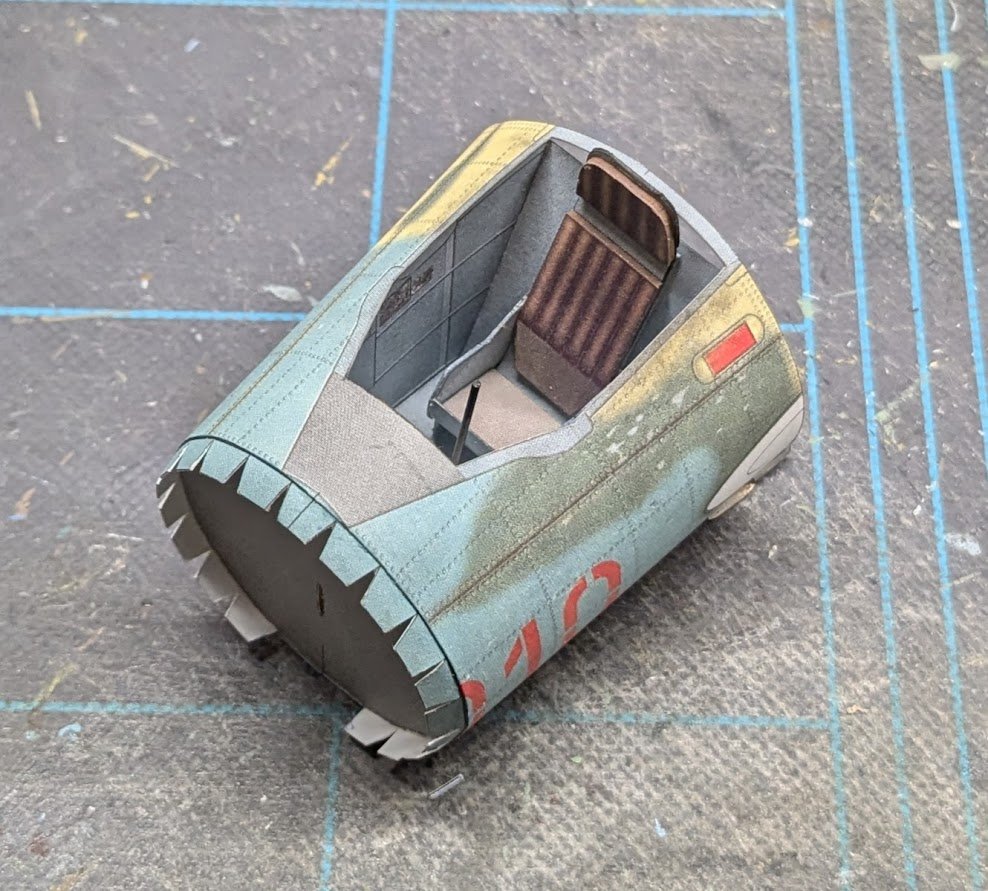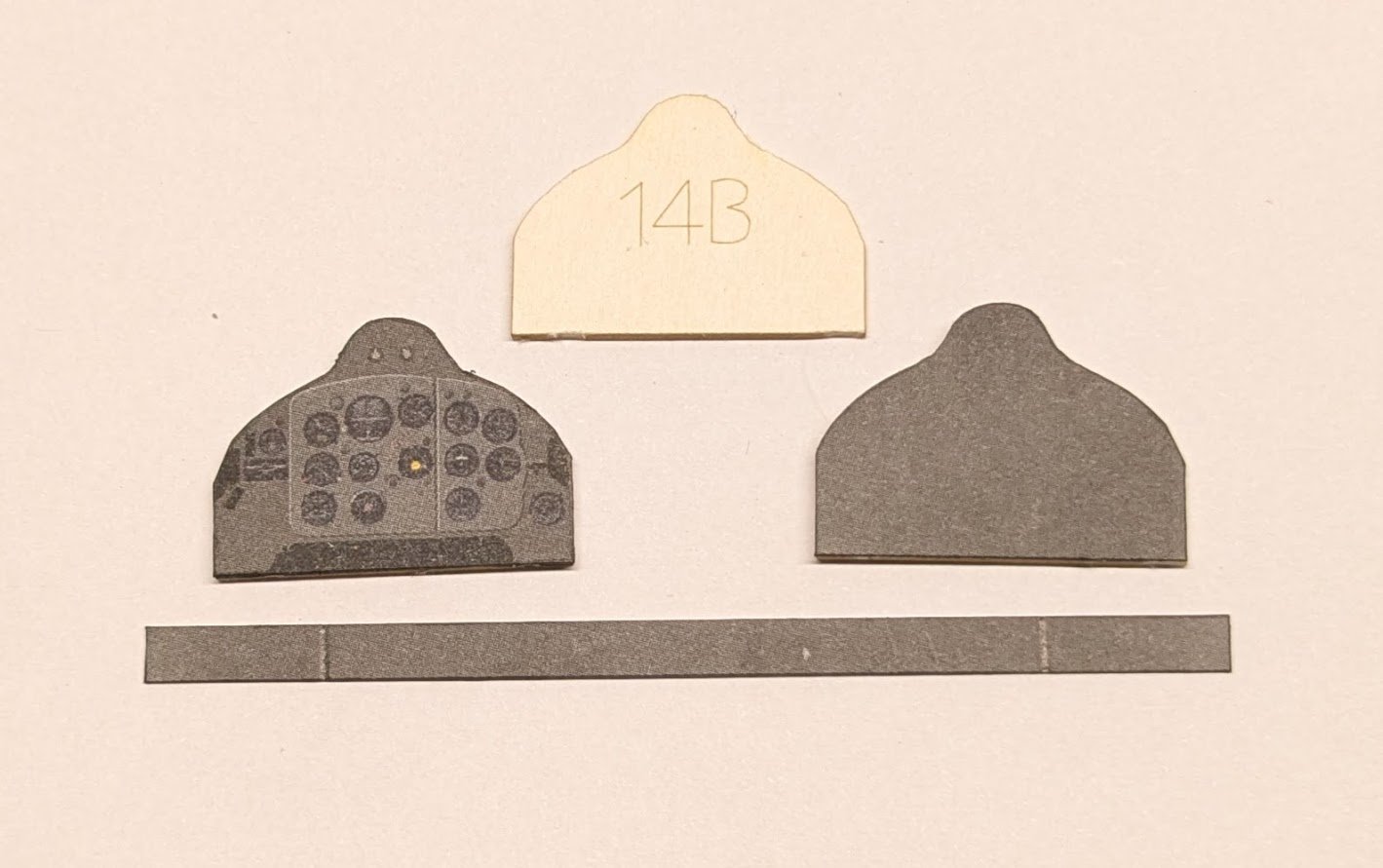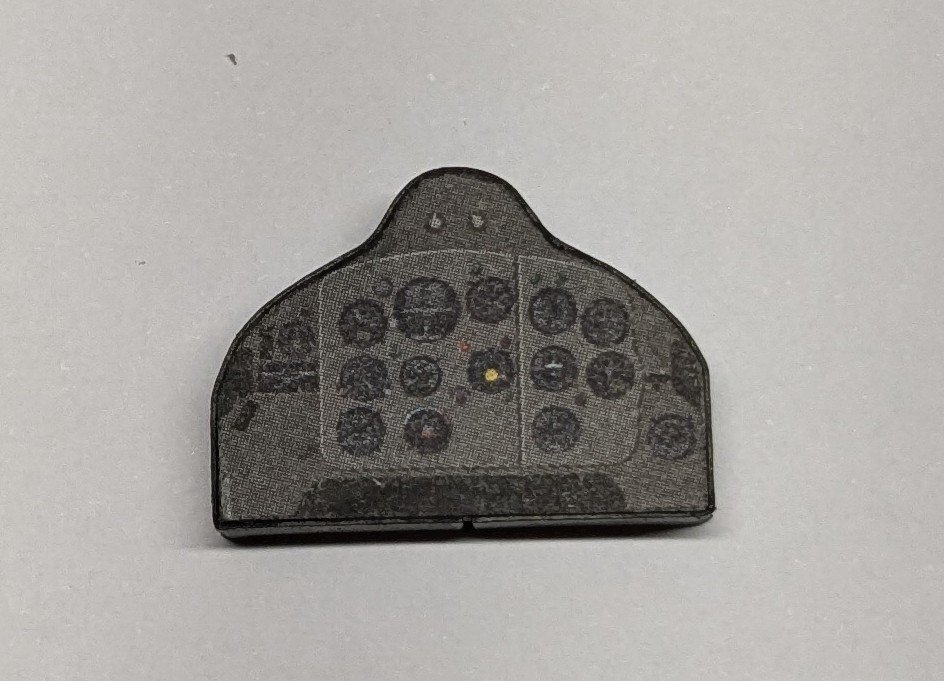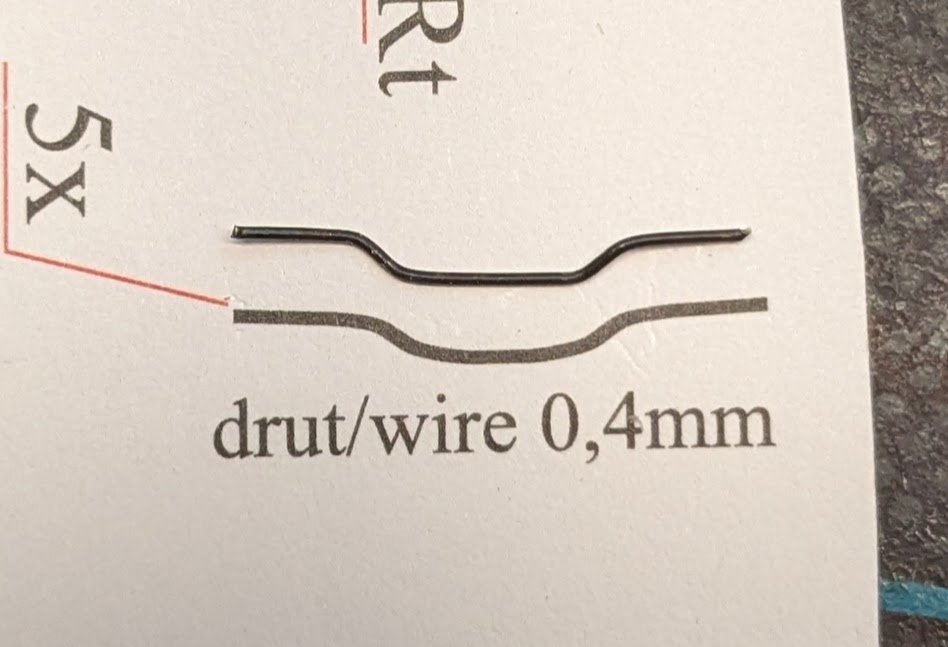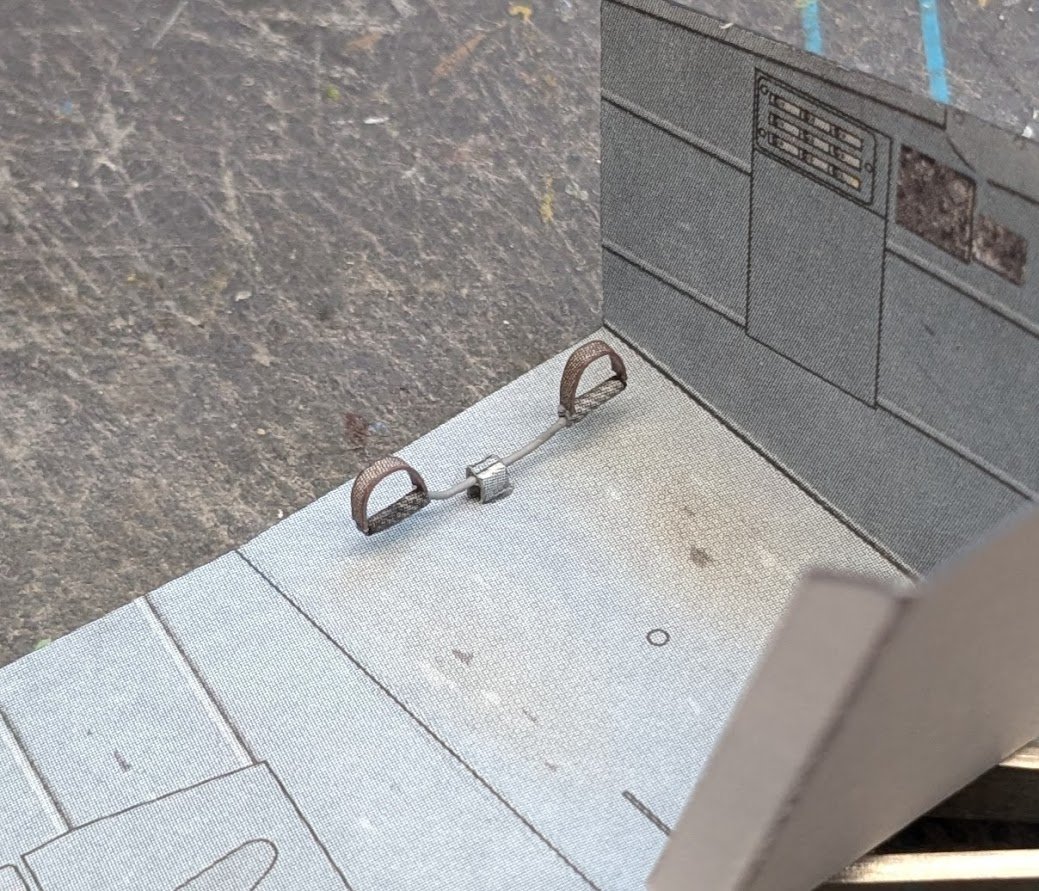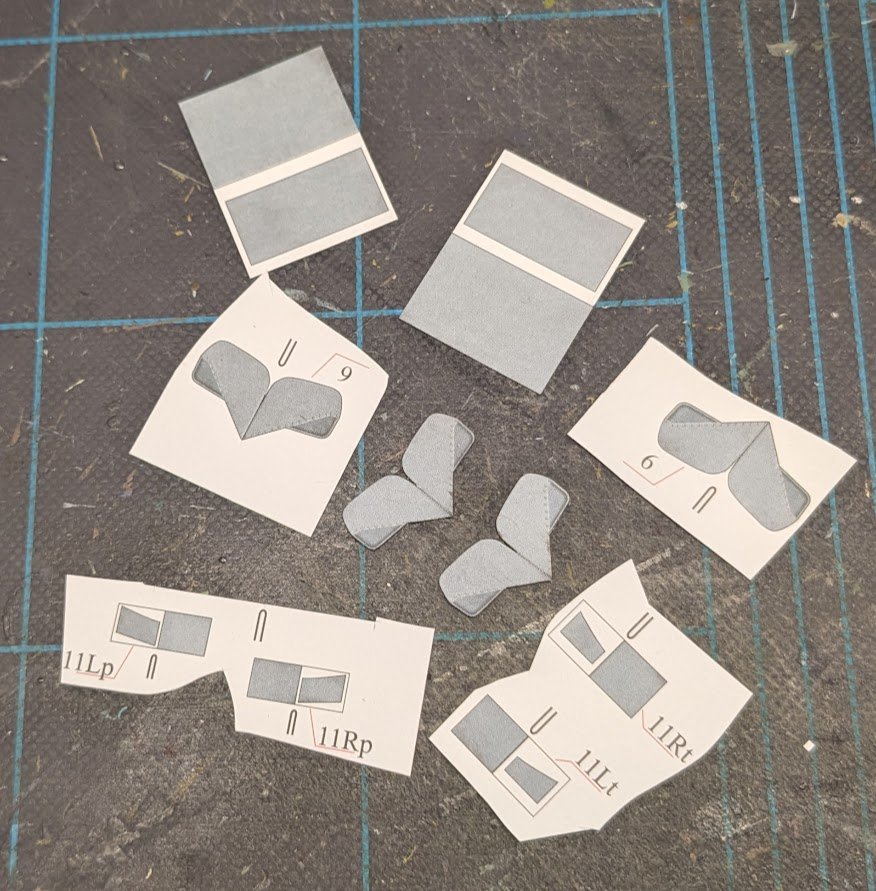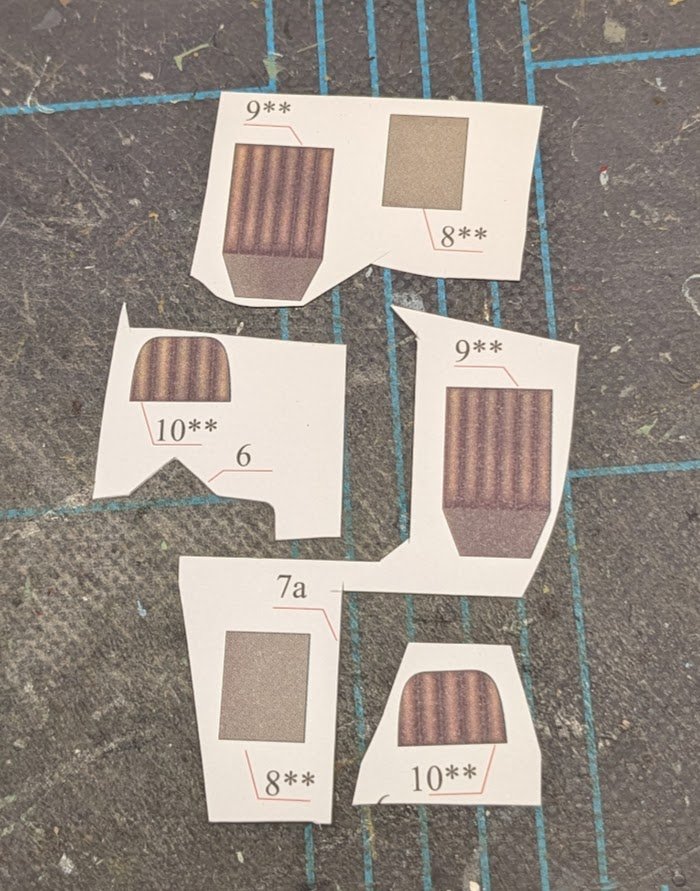-
Posts
10,543 -
Joined
-
Last visited
Content Type
Profiles
Forums
Gallery
Events
Everything posted by ccoyle
-
Would that happen to be one of the Polish forums? I check the gallery at Kartonowki often, but since I can't read Polish (except for very basic modeling terms like drut or klej ), I don't visit the others regularly unless I am looking for builds of a specific kit.
-
Time to work on the aft fuselage. This next fuselage section was supposed to be added before working on the nose section according to the instructions, but that fact was only very briefly mentioned, which is how I managed to overlook it. In reality, it makes no practical difference whether one adds it earlier or only just now, as I have done. This section is a basic ring structure plus a bulkhead. There are two spots, marked with a 'W', that must be cut out. You can do that now, or after the section has been added to the fuselage. The latter option is advisable, since cutting them out now will create two weak spots along that edge. And here's the fuselage after that section has been added. Just one more section to go!
-
Congratulations on finishing (from a Toffees fan)!
- 16 replies
-
- dory
- Model Shipways
-
(and 2 more)
Tagged with:
-
Congratulations on a very sharp result!
- 62 replies
-
- prince de neufchatel
- model shipways
-
(and 1 more)
Tagged with:
-

how to value a pre 1950 model of the Santa Maria
ccoyle replied to amuzed_traveler's topic in New member Introductions
Since we don't really have a dedicated discussion area for topics like this one, I have moved it to the member introductions area. -

Parts an parts # building the norske love 1:75
ccoyle replied to joebgame's topic in Wood ship model kits
Since the question concerns a specific kit, I have moved the topic to the kits discussion area. Can't help you with the numbering, though. 😬 -
Okay, I made a significant blunder in this next phase! 😬 More on that in a moment . . . Next we assemble the air intake duct. A pair of laser-cut parts form the divider. You can see that I somehow managed to scuff the black portion on the left side, so I painted over both faux recesses. The left side of the sheathing needed very slight trimming, as did the center-line covering strip. There are two ways you can do the forward section with the intake, either add the intake to its smaller ring and then join the two rings together, or glue the rings together first and then add the intake. I strongly advise the latter option. There is no joiner strip provided for the forward ring, so I mad a small one from 20# bond. Joining the rings might seem awkward at first because the aft ring isn't closed at this point, but the task is not difficult. Next I added the wheel well to the cockpit section. There is no tic mark printed on its interior, but you can easily position the well by aligning its hole (where the nose wheel strut will go later) with the hole in the bulkhead and its sides with the fuselage's printed lines. And here's the finished nose. When joining these two sections of fuselage, care must be taken to make sure the forward projection of the wheel well fits into the bulkhead gap provided for it and within the fuselage skin. Don't forget to add glue to the wheel well sides where the ends of the fuselage ring land on them. Let's see -- did I forget anything? Oh, yes, that's right -- I forgot to add EXTRA WEIGHT to the interior of the nose! 😑 Derp!! Oh, well -- I have a solution in mind for that when the time comes. That's it for now!
-
Welcome aboard, friend. Pleasant stay be yours, enjoy! Haiku I write poor.
-
Now we get into one of the construction sequences that is affected by whether the builder opts for wheel wells. If you choose to omit wheel wells, the sequence is pretty straightforward -- just two more conic sections and a bulkhead. (NOTE: Regardless of option, weight must be added to the interior of the nose for the model to sit correctly on its tricycle gear.) If you decide to go for the wheel wells, well then things get a little dicier. First we fold and glue up the nose wheel well -- no biggie. I later added scrap card strips along its sides, as I did for the observer's tub. DO NOT add strips to the front or back -- the tub is designed to fit snugly between two bulkheads. Note that there is a small projection on the forward end of the well. Here we have the forward bulkhead with the faux air inlet laminated to it. The builder can either leave it like this or choose to add a more detailed inlet divider. The cutout at the bottom is only done for the wheel well option -- this is where the previously mentioned wheel well projection passes through the bulkhead. The next part could be a challenge. The first part of the detailed air inlet consists of a printed interior color ring that has to be wrapped in multiple paper rings. The challenge lies in getting the first ring perfectly round. Here's how I went about that. First, I needed to pre-shape the interior color ring. Happily, it fits perfectly around the handle of a 23mm dapping tool. The part was dampened, wrapped, taped, and allowed to dry. Note that the color side goes on the inside of the ring. Note that the ring parts are lettered b to f and that their lengths increase slightly with each part, because as each one is added, the diameter of the ring increases. Leaving the first ring on the dapping tool, I overlapped the seam with ring b to close the first ring. For each successive ring, I shifted the seam slightly so as not to create a weak point in the ring's structure. Here's the finished ring with some items to note. First, I wrapped the wrong end of the interior color cylinder. 😑 The wrapped rings should be at the front of the cylinder, and the little printed triangle on the interior ring points in that direction, hence my rings are on the back. Fortunately, this is only a minor error, but it's still annoying. Second, I did not add ring f; I noticed that each ring produced a widening gap at its seam, indicating some error creep, so on the very strong suspicion that the ring will be slightly too large even at this stage, I chose to leave the last ring off. Lastly, I soaked the outside of the ring with CA to stiffen the part. Finally, here's a group shot of all the parts that will go into making the nose of the aircraft: two conic sections, the wheel well, the inlet bulkhead, the inlet ring, and the parts to make the inlet divider. Unlike the previous fuselage sections, the larger ring here has no seam tab, since its two ends will land on the wheel well (hence the addition of the scrap card along the well's sides), and the smaller ring does not wrap around a bulkhead -- it will be glued to the joiner strip on the larger ring aft and to the interior air inlet ring forward. I suspect I may need to bevel the inlet ring to get things to fit easily. Fingers crossed!
-
Nice to hear the voice that goes with the models! It was fun hearing your hosts describe one or the other of your models and thinking, "Hey, I've seen that one!"
- 81 replies
-
- Micromaster
- Eduard
- (and 4 more)
-
Now we get to see that fuselage grow! The forward bulkhead of the observer's section has a color piece to be laminated to the laser-cut bulkhead. Here are all the parts and sub-assemblies for the observer's section. Both bulkheads have been beveled. We add the joiner strips, close the cylinder, and glue in the forward bulkhead. It's better, I think to glue the instrument panel to the bulkhead after the bulkhead is glued in -- adding the panel first would make it more difficult to glue in the bulkhead. I added some scrap 2mm card to the flimsy observer's tub to increase the gluing surface area. Once the tub is glued in, there's no way to reach into the fuselage to help position the aft bulkhead. To make the task easier I punched a couple of holes in the bulkhead and stiffened it with CA. The holes make it possible to manipulate the bulkhead with pliers. And here's the finished assembly. A little bit of muscle (but not too much) will be required to glue the two fuselage sections together, so it's a good idea to let the glue cure for awhile. That's it for now! And yes, if you're wondering, I did mow and edge my grass today and plan to de-thatch it this evening. Fun. 😑
-
Here are the parts for the two seats. Making the seats is not difficult. Matching the curve of the bottom to the two sides on each seat is a bit challenging, but not overly so. There is no reverse-side printing on the parts, so you will need to add some color to the front of each bucket. You can now see the different cant produced by the two sets of seat mounts -- the seat on the right with the steeper cant is the pilot's seat. The control stick has been added. The kit provides a paper part to be rolled, which is a pain for tiny, narrow tubes, so I replaced it with painted 0.88 mm styrene rod. All we needed to do next was glue the tub into the cockpit section and add the seat. BTW, there are locator marks for the seat on the cockpit floor, but they don't match the width of the seat mounts. They're useful, though, for centering the seat. Next we move to the observer's station, starting with his instrument panel. The panel consists of three pieces of 2 mm laser-cut card to be laminated together and then skinned. The construction is not difficult. And now for some bad news: We had our first hot day in the Upstate today. I had to turn the AC on for the first time this year to cool down my sweltering upstairs man cave (I really dislike summer weather). We also got a cubic yard of topper for the front lawn, so a lot of spring yard work is in the immediate forecast (I really dislike yard work). Hopefully I will still get some modeling time in. That's all for now!
-
A bit more progress. . . Next we have the rudder bar. There is a template for making the bar from wire. Don't worry about matching the template exactly -- this element will be difficult to see in the finished model. In fact, the instructions even suggest omitting the rudder bar if you don't want to deal with it. Here's the finished rudder bar mounted to the cockpit floor. The bar is fiddly -- there's no magic bullet for coping with the tiny parts. Maybe keep a swear jar handy?🤔 Also, there's no locator mark on the floor, but the bar is supposed to be positioned directly below the instrument panel. Next we will start on the seats, remembering that the pilot's seat doesn't go into the cockpit tub until later. Here's a bunch of seat parts that need to be doubled, i.e., folded and glued to make a 2x-thick part. The instructions say that the two seats are identical, but there is obviously two different sets of parts #11. I suspect the difference is linked to slope of the floor in each tub, but I will need to confirm this once both tubs are ready for seats. There's also a bunch of seat cushions that must be laminated to laser-cut backings. That's it for tonight. Time permitting, I'll get the seats assembled tomorrow.
About us
Modelshipworld - Advancing Ship Modeling through Research
SSL Secured
Your security is important for us so this Website is SSL-Secured
NRG Mailing Address
Nautical Research Guild
237 South Lincoln Street
Westmont IL, 60559-1917
Model Ship World ® and the MSW logo are Registered Trademarks, and belong to the Nautical Research Guild (United States Patent and Trademark Office: No. 6,929,264 & No. 6,929,274, registered Dec. 20, 2022)
Helpful Links
About the NRG
If you enjoy building ship models that are historically accurate as well as beautiful, then The Nautical Research Guild (NRG) is just right for you.
The Guild is a non-profit educational organization whose mission is to “Advance Ship Modeling Through Research”. We provide support to our members in their efforts to raise the quality of their model ships.
The Nautical Research Guild has published our world-renowned quarterly magazine, The Nautical Research Journal, since 1955. The pages of the Journal are full of articles by accomplished ship modelers who show you how they create those exquisite details on their models, and by maritime historians who show you the correct details to build. The Journal is available in both print and digital editions. Go to the NRG web site (www.thenrg.org) to download a complimentary digital copy of the Journal. The NRG also publishes plan sets, books and compilations of back issues of the Journal and the former Ships in Scale and Model Ship Builder magazines.




